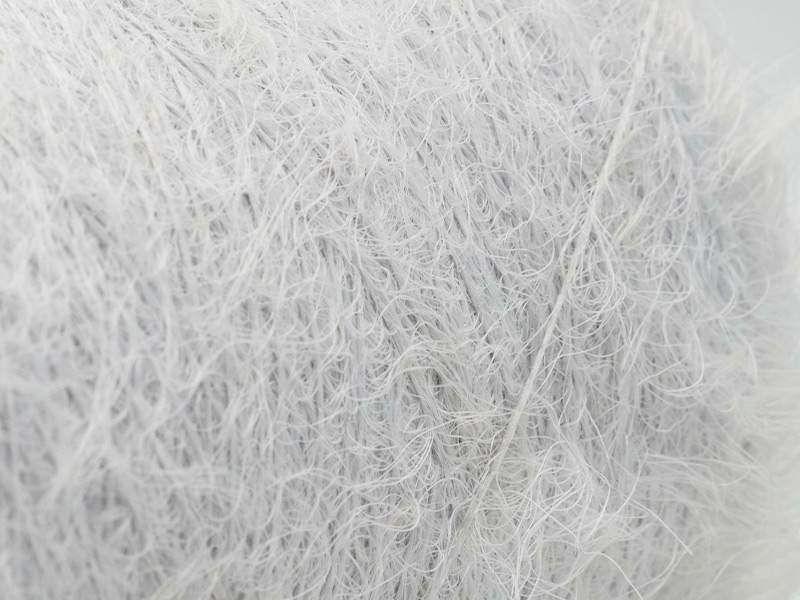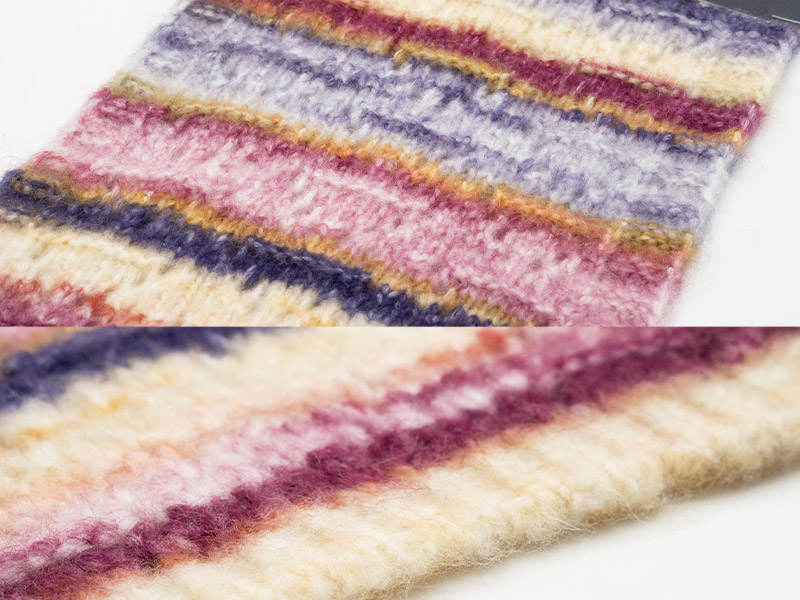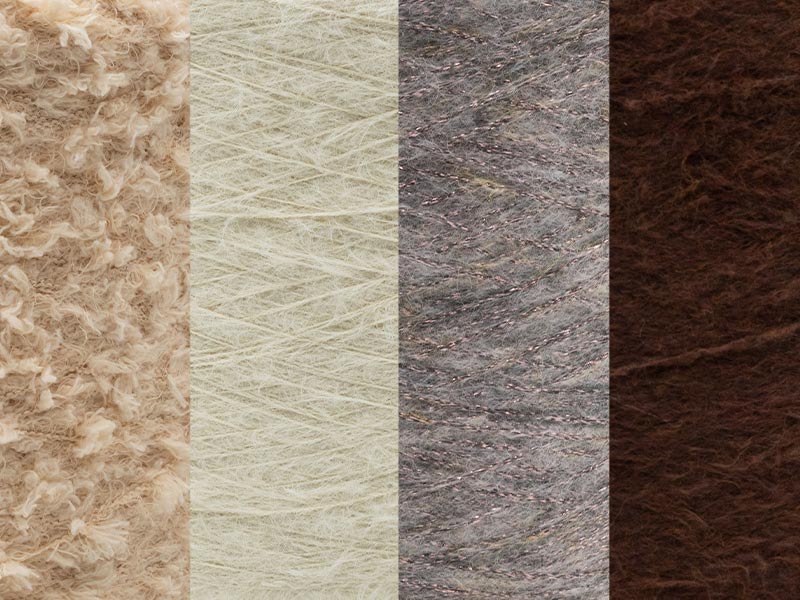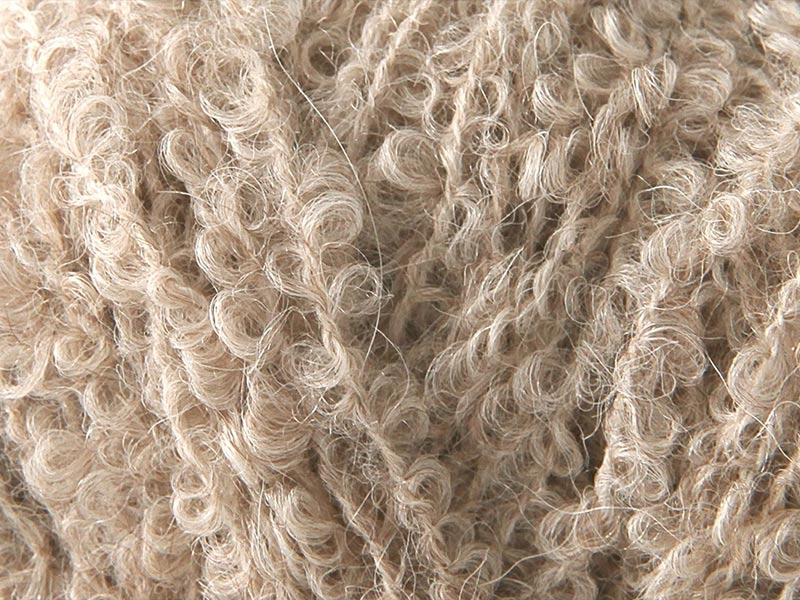What Is Feather Yarn Used For? Fluffy Textures, Cozy Projects & Expert Tips
What Is Feather Yarn—and Why It Adds Flair to Your Projects
Feather yarn, a popular variety of novelty or “eyelash” yarn, features fine, feathery strands that radiate from a core thread. It mimics the softness and look of feathers, making it ideal for projects that crave texture, warmth, and visual impact. Lightweight yet plush, feather yarn is perfect for adding flair and coziness to your knits and crochets. But what exactly can you use feather yarn for, and how do you get the best results? Let’s explore its structure, applications, and tips for crafting success.
What Defines Feather Yarn?
Feather yarn is distinguished by its unique construction and tactile charm.
Feathery, Eyelash-Like Texture
Also known as eyelash yarn, feather yarn has countless short strands protruding from a central core—resembling tiny feathers radiating outward.These fibers can be long or short depending on the production technique: snake-knit and cut between warp threads to create loops that are then sheared .
Core Thread + Decorative Fibers
Typically constructed with a sturdy base yarn (polyester, nylon, cotton) and decorative feather-like fibers (viscose, polyester, nylon) extending outward . The decorative strands are cut to 10 mm+ for larger “feather” effects or under 10 mm for subtle texture.
Softness & Visual Appeal
Feather yarn creates a plush, tactile surface that feels gentle against the skin and adds visual interest to simple stitches.
Lightweight Warmth
Thanks to the feathery envelope, feather yarn traps a fluffy layer of warm air, ideal for accessories and garments that feel cozy without heaviness.

Main Uses of Feather Yarn
From garments to home décor, feather yarn adds flair wherever texture and softness matter most.
Scarves, Cowls & Shawls
Feather yarn is often used alone or plied with smooth base yarn to create soft, fuzzy scarves or cowls. It adds a subtle halo effect that feels silky. Beginners often pair it with a smooth yarn for better structure .
Sweaters & Cardigans
When used as accents—like cuffs, collars, or yokes—feather yarn brings softness and texture. Whole sweaters made from it become fluffy, ultra-cozy statement pieces .
Hats, Gloves & Socks
Used sparingly, feather yarn adds warmth to winter accessories. Avoid full mittens to prevent wear—fuzzy cuffs or pom-poms are better options.
Blankets, Rugs & Throws
For decorative throws or bath mats, the furry texture creates a luxurious feel. Colorful rugs or blankets gain dramatic visual appeal and comfort .
Plush Toys & Novelty Crafts
Feather yarn is perfect for faux fur effects on amigurumi toys, animal ears, or soft sculptures. Reditter aswampwitch describes securing eyelash yarn along another yarn for fur effects on plushies.
Feathery, Eyelash-Like Texture
From garments to home décor, feather yarn adds flair wherever texture and softness matter most.
Tips for Using Feather Yarn
Pair with a Strong Core Yarn
Because feather yarn can be slippery and lightweight, knit or crochet it along with a sturdier yarn—especially for structure and ease of use .
Use Larger Hooks/Needles
Go up a size or two; tight tension can compress fibers and hide the feather effect. Larger needles allow strands to bloom.
Incorporate Slowly for Volume Control
Too much feather yarn can create bulk. Use it for accents—edging, stripes, color blocks—rather than entire projects.
Handle with Care
Avoid frogging—untangling is tricky. Instead, treat feather yarn sections as “worked” and secure ends to prevent fraying .
Care & Maintenance
Hand-wash gently, avoid agitation, and lay flat to dry. Store pieces loosely to preserve the fluffy texture.
Feather Yarn by the Numbers—A Breakdown
Feature | Details |
Fiber Content | Core: polyester/nylon/cotton; Pile: polyester/viscose/nylon |
Pile Length | Short (<10 mm) to long (>10 mm), depending on cut style |
Texture | Fluffy, soft, fuzzy |
Gauge | Often treated as bulky yarn (5–6), but always test |
Washcare | Hand-wash cold, lay flat, minimal handling |
Why Choose Feather Yarn?
Textural Drama: Instantly elevates wearables and home decors.
Comfort Meets Style: Soft and safe for skin contact.
Design Versatility: Works as trim, accent, or full garment medium—but control bulk.
Beginner-Friendly: Paired with regular yarn, it encourages confidence through texture play.
Project Ideas to Try
Fuzzy Scarf: Using a strand of feather yarn held with acrylic for a halo effect.
Statement Boa: Knit i-cord strips and braid them into chic neckwear.
Accent Yoke Sweater: Feather trim around collar and cuffs for cozy elegance.
Bath Rug or Pouf: Knit large loops with feather yarn for soft and plush textures.
Animal Amigurumi: Use feather yarn to simulate fur—great for teddy bears or fantasy creatures.
Feather Yarn vs. Other Novelty Yarns
Yarn Type | Texture | Best For | Care |
Feather | Very fluffy | Scarves, trims, plush toys | Hand-wash |
Chenille | Velvety | Blankets, hats | Machine-washable |
Bouclé | Loopy, pebbly | Sweaters, scarves | Gentle wash |
Ribbon | Flat & shiny | Summer tops, accessories | Machine-washable |
Feather yarn stands out for its elegant softness and decorative volume—while chenille or ribbon have different tactile and functional roles.
Conclusion
Feather yarn is a whimsical, luxurious fiber that brings texture, warmth, and style to a wide range of projects—from snuggly scarves and delicate shawls to playful toys and home décor. While it’s best used in combination with another yarn for structure and ease, its visual magic is undeniable. With proper handling and creative design, feather yarn can transform simple patterns into fluffy masterpieces.
Ready to craft with feather yarn? Explore our curated collection and get started designing your next statement piece!
Related News
Discover more about the latest developments in the yarn industry, explore articles on development trends and innovative technologies, and provide you with more industry insights.

Wool Acrylic Blend Yarn: Benefits, Uses & Wholesale Sourcing Guide
The choice of fiber in the textile industry affects not only the quality of the finished product, but also how well it works, how much it costs, and how much people want to buy it. Wool and acrylic are two of the most popular fibers, and each has its own benefits. Wool is known for being warm, strong, and breathable, while acrylic is known for being strong, cheap, and easy to care for.

What Is Faux Mink Material? Ultimate Guide to Luxurious, Ethical Faux Fur
Faux mink material is a premium type of synthetic fur designed to imitate the lush, silky softness of real mink fur—without using any animal fibers. As an ethical and cost-effective alternative, faux mink offers elegance, warmth, and versatility for fashion, home décor, and craft applications. Its popularity has surged in recent years as both brands and consumers look for more sustainable, cruelty-free textile options.
But what exactly is faux mink? How is it different from other faux furs, and what makes it ideal for specific projects? Let’s explore everything you need to know.

The Secret Behind “Fuzzy Yarns”: How Different Fancy Yarns Make Soft, Fluffy Textures
In the fall and winter, nothing feels warmer or more welcoming than yarns with a soft, fuzzy touch. These “hairy” fancy yarns not only add warmth to any fabric, but they also give it a sense of texture, depth, and life. But how do these fluffy effects happen?
Let’s take a closer look at five common types of fuzzy fancy yarns: crochet yarn, blowing yarn, raised yarn, sueded yarn, and bouclé yarn. We’ll talk about how each one gets its unique surface effect, how comfortable it is, how much it costs, and what it’s good for.This guide will show you the best types of yarn to use for summer projects, compare their features, and give you some fun ideas for your next collection or DIY project.

